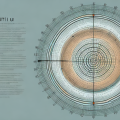The unit circle project is an important part of mathematics that can help enhance understanding in a variety of topics. This comprehensive guide will cover all there is to know about the unit circle, from the basics to solving problems. After reading this guide, you should have a complete understanding of how to use the unit circle, what it is, and the benefits of creating your own.
What is the Unit Circle?
The unit circle is a visual representation of circles with a radius of one centered on the origin of the coordinate system. It can be used to measure angles in radians and to calculate the values of trigonometric functions, such as sine, cosine, and tangent. This circle is a tool used to help understand the relationships between angles and points represented by coordinates.
The unit circle is a useful tool for understanding the relationships between angles and points in the coordinate plane. It can be used to calculate the values of trigonometric functions, such as sine, cosine, and tangent, and to measure angles in radians. Additionally, the unit circle can be used to graphically represent the relationships between angles and points in the coordinate plane.
Benefits of Exploring the Unit Circle
Using the unit circle has various benefits. Every angle has a reference point on the circle, which allows for easier calculation of trigonometric functions such as sine and cosine. Furthermore, by exploring the unit circle, it is easier to visualize how these functions can be used to model real-world phenomenon. Being able to visualize math can help solidify its concepts in students’ minds.
Unit Circle Basics
Before starting to explore the unit circle, there are some basic facts worth knowing. The unit circle has a radius of 1, which means its circumference is equal to 2π. The coordinates that represent points of the unit circle are (1, 0), (0, 1), (-1, 0), and (0, -1). These points are called the “standard points” and can be used to measure angles or calculate trigonometric functions.
Trigonometric Functions in the Unit Circle
Trigonometric functions in the unit circle can be used to calculate an angle’s sine, cosine, or tangent given their coordinates. There are six basic trigonometric functions: sine (sin), cosine (cos), tangent (tan), cosecant (csc), secant (sec), and cotangent (cot). Each of these functions use a different coordinate on the unit circle to calculate their result.
Finding Angles of a Triangle in the Unit Circle
One can find angles in a triangle formed by the unit circle’s coordinates by splitting it into sections. Each section can then be treated as an independent right triangle, and its angles can be calculated using basic trigonometry. An example of finding an angle would be if two of the points had coordinates (-1, 0) and (0, 1). The angle will then be a right angle, as it is formed by two of the standard points.
Calculating Sine, Cosine and Tangent in the Unit Circle
To calculate sine, cosine or tangent for an angle in the unit circle one must first use basic trigonometry to find the lengths of each side of a triangle formed by the coordinates of the points. Depending on which of these three functions you are calculating you will use different formulas involving the lengths found. For example, when calculating sine you must use the formula sinθ = Opposite/Hypotenuse.
Using Special Triangles to Solve Problems in the Unit Circle
Special right triangles have lengths with ratios that lend themselves to more convenient calculation in geometry problems. Some special right triangles include 3-4-5 triangles, 45-45-90 triangles, and 30-60-90 triangles. Knowing these ratios makes it easier to calculate trigonometric functions in the unit circle without having to know unnecessary calculations.
Tips for Memorizing the Values of Sin, Cos, and Tan
Memorizing trigonometry tables and values can be done in a variety of ways. A mnemonic device like SOH-CAH-TOA (Sine = Opposite/Hypotenuse, Cosine = Adjacent/Hypotenuse, Tangent = Opposite/Adjacent) can be a helpful tool. Additionally, you can use the memorization strategies from “memory athletes” such as visualizing objects like trees in different shapes or pegging systems which involve associating words with numbers.
Examples of Problems Using the Unit Circle
The unit circle can be used to solve a variety of problems. One example is finding the area of an inscribed shape. To do this one needs to first determine the angles of each corner then calculate the area using trigonometric functions such as sine and cosine. Another example is calculating an angle given an arc length. To do this you need to first determine the circumference of the circle and then use that information along with the arc length to calculate the desired angle.
Summary and Conclusion
The unit circle is an important tool for any mathematics student or teacher to understand because it provides a visual representation of angles, trigonometric functions, and other real-world connections. It is beneficial for finding angles in triangles and calculating values for those angles in difficult equations. Being able to use this tool properly is important for anyone looking to gain a better understanding of how math works in practice.





